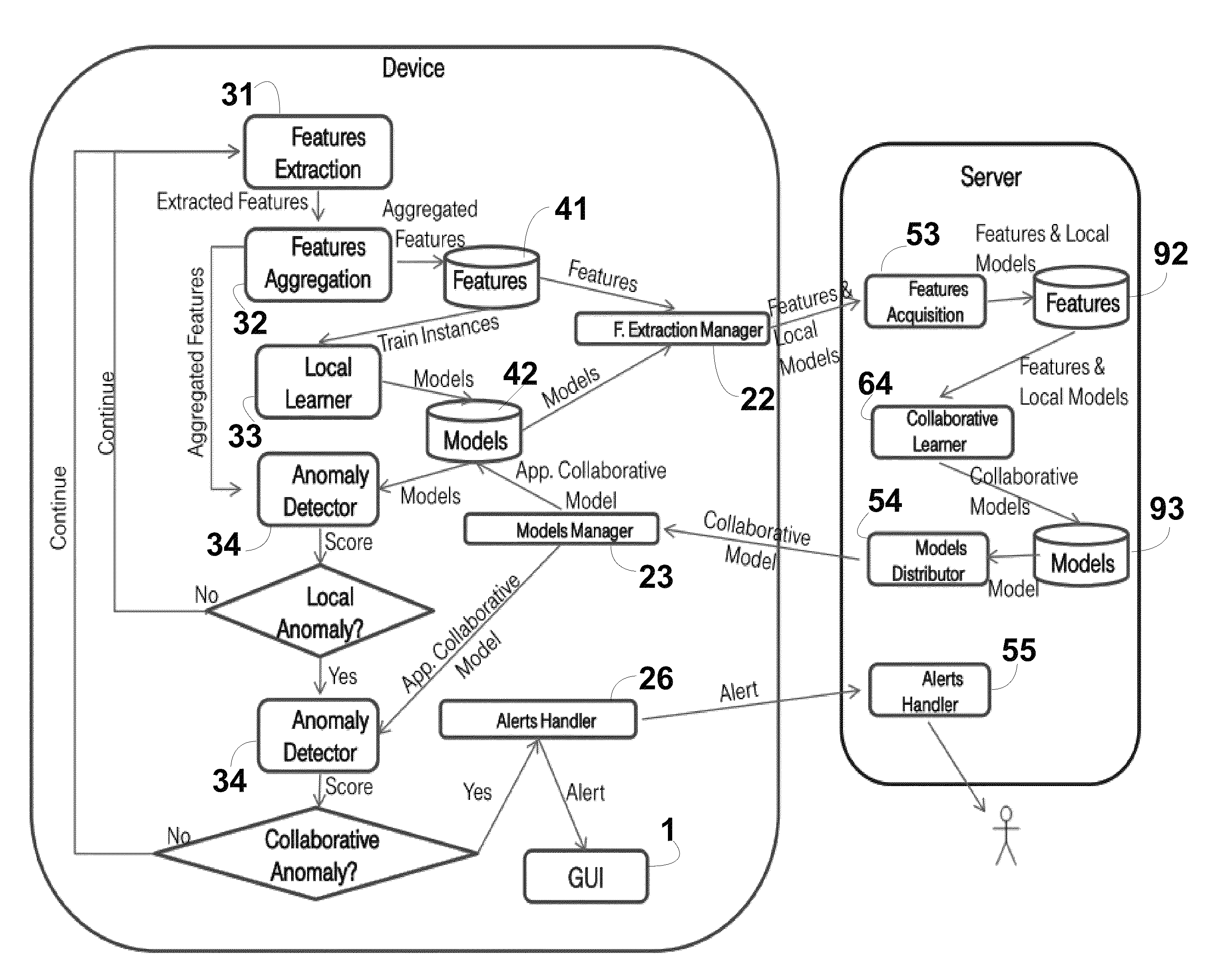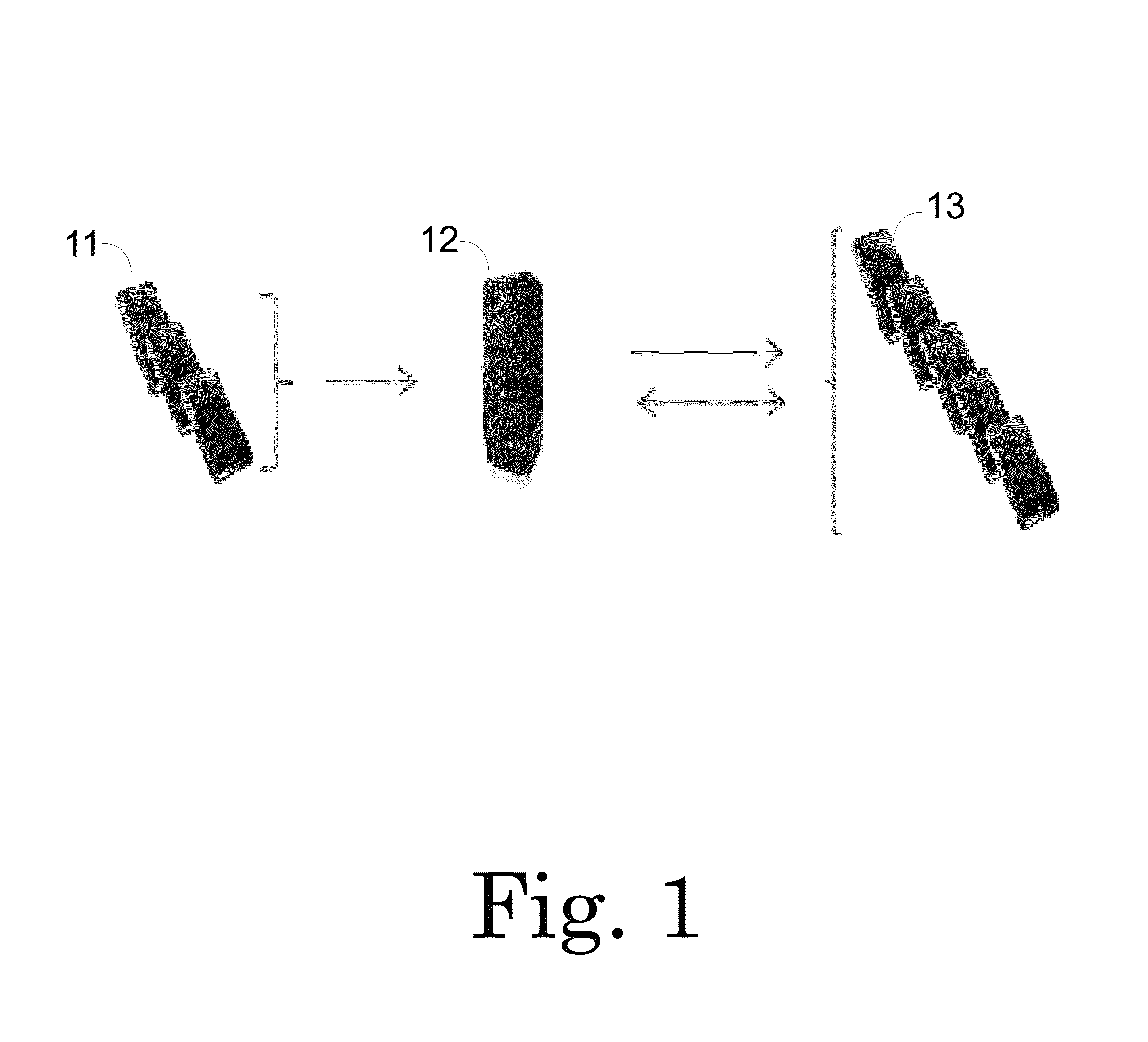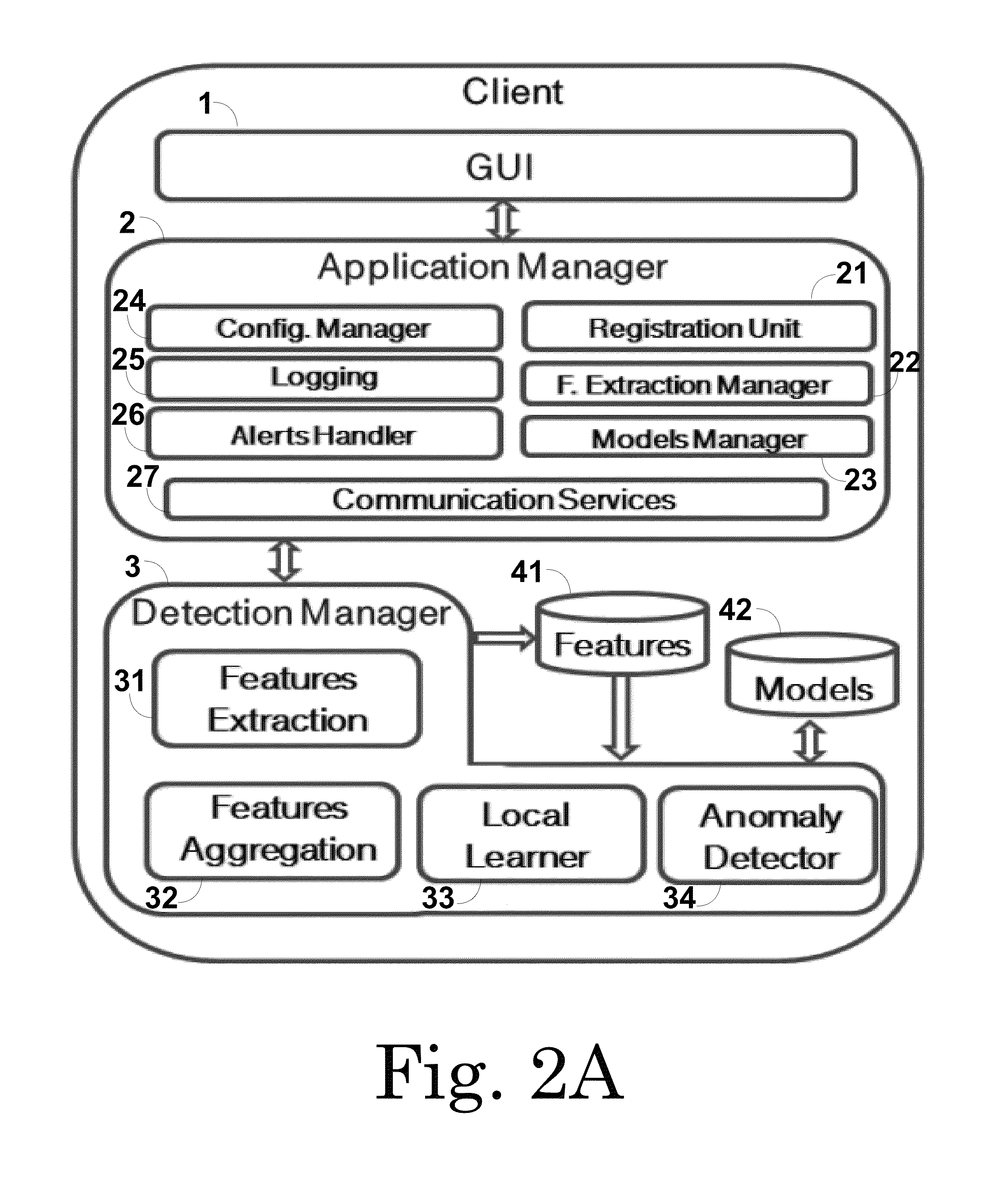System for detection of mobile applications network behavior-netwise
a network behavior and network behavior technology, applied in the field of malware activity detection in mobile networks, can solve problems such as network congestion incidents, network overload, and significant increase in the number of malware applications which harm users or compromise users' private data
- Summary
- Abstract
- Description
- Claims
- Application Information
AI Technical Summary
Benefits of technology
Problems solved by technology
Method used
Image
Examples
example 1
[0121]FIGS. 3A-6B show data analysis of network behavior for the popular applications Facebook (FIG. 3A and zoomed 3B), Skype (FIG. 4A and zoomed 4B), Gmail (FIG. 5A and zoomed 5B) and WhatsApp (FIG. 6A and zoomed 6B) on the devices of different users. The graphs are presented in average sent vs. average received bytes (the distinguishable patterns of each application are clearly highlighted). The data points of different users are plotted in different shapes.
[0122]As can be seen from the graphs, each one of the analyzed applications has its own specific traffic pattern which is easily distinguishable from other applications (on each of the graphs, the axis value's range is different). Additionally, other features can be utilized for differentiation in less certain cases.
example 2
[0123]FIGS. 7A-8B show the behavior of different applications of the same type.
[0124]FIG. 7A depicts the traffic pattern of two e-mail client applications: Gmail and Android's native Email client. FIG. 7B shows a zoom on the graph of FIG. 7A. FIG. 8A depicts the traffic pattern of two Internet browsers: Mozilla Firefox and device's native Browser application. FIG. 8B shows a zoom on the graph of FIG. 8B. The graphs are presented in average sent vs. average received bytes (the distinguishable patterns of each application are clearly highlighted). The data points of different users are plotted in different shapes.
[0125]It can be seen from the graphs that different applications from the same functionality type have very similar traffic patterns among them, while the traffic patterns of different types of applications are different.
[0126]Based on the observations of the examples above, the following features of the invention are confirmed:[0127]Modeling a mobile application's network be...
PUM
 Login to View More
Login to View More Abstract
Description
Claims
Application Information
 Login to View More
Login to View More - R&D
- Intellectual Property
- Life Sciences
- Materials
- Tech Scout
- Unparalleled Data Quality
- Higher Quality Content
- 60% Fewer Hallucinations
Browse by: Latest US Patents, China's latest patents, Technical Efficacy Thesaurus, Application Domain, Technology Topic, Popular Technical Reports.
© 2025 PatSnap. All rights reserved.Legal|Privacy policy|Modern Slavery Act Transparency Statement|Sitemap|About US| Contact US: help@patsnap.com



